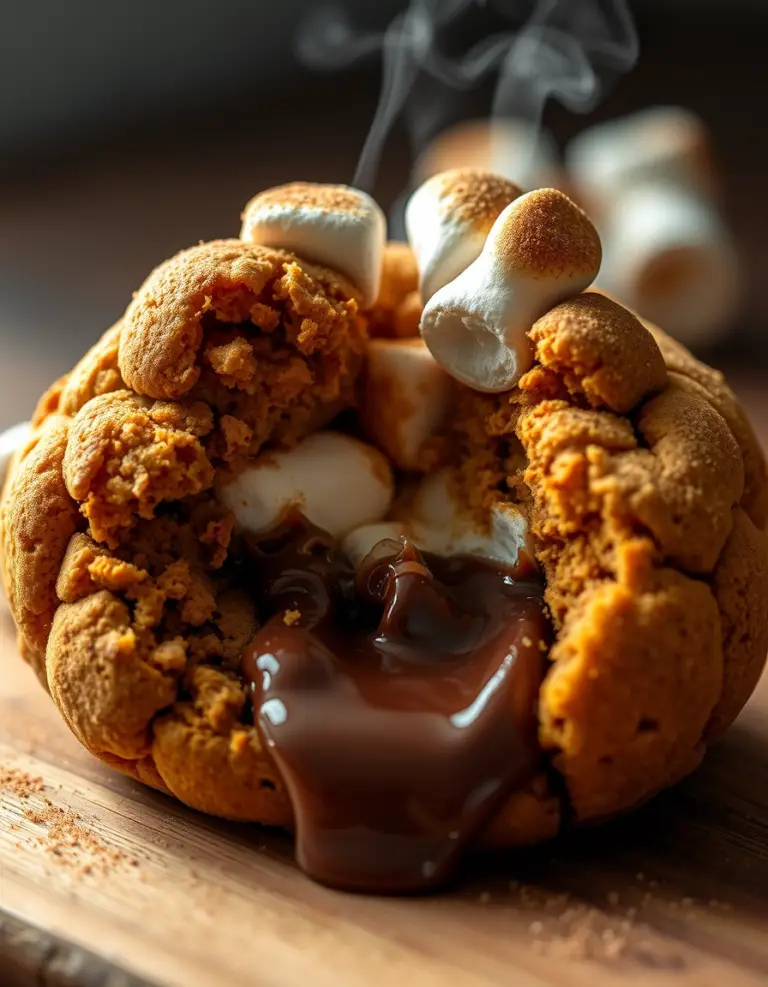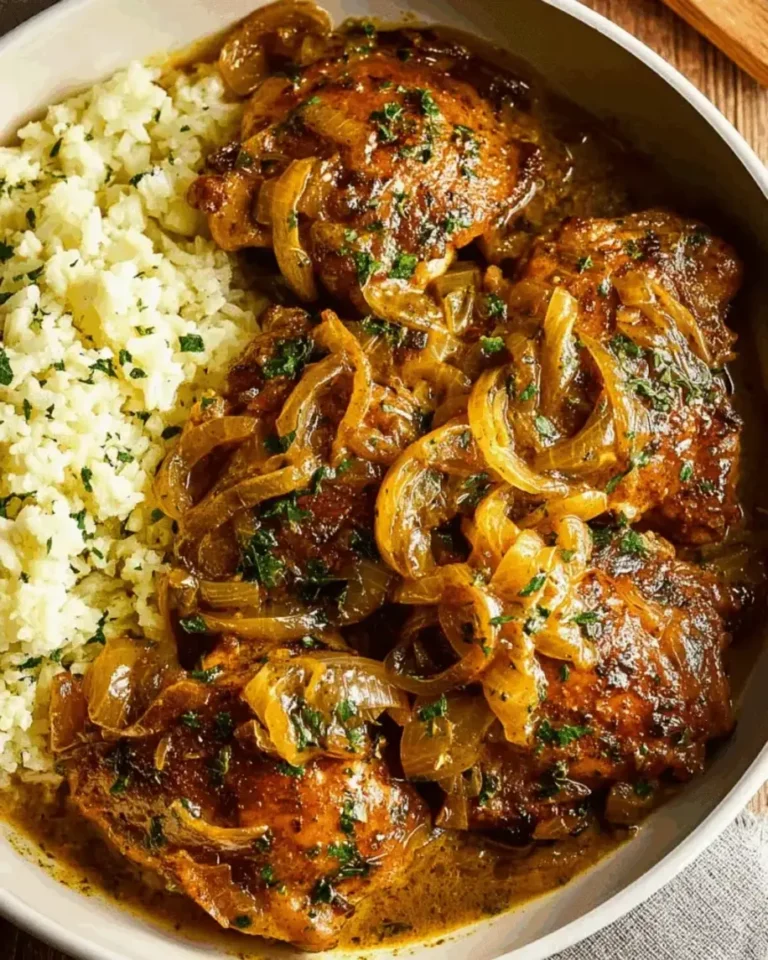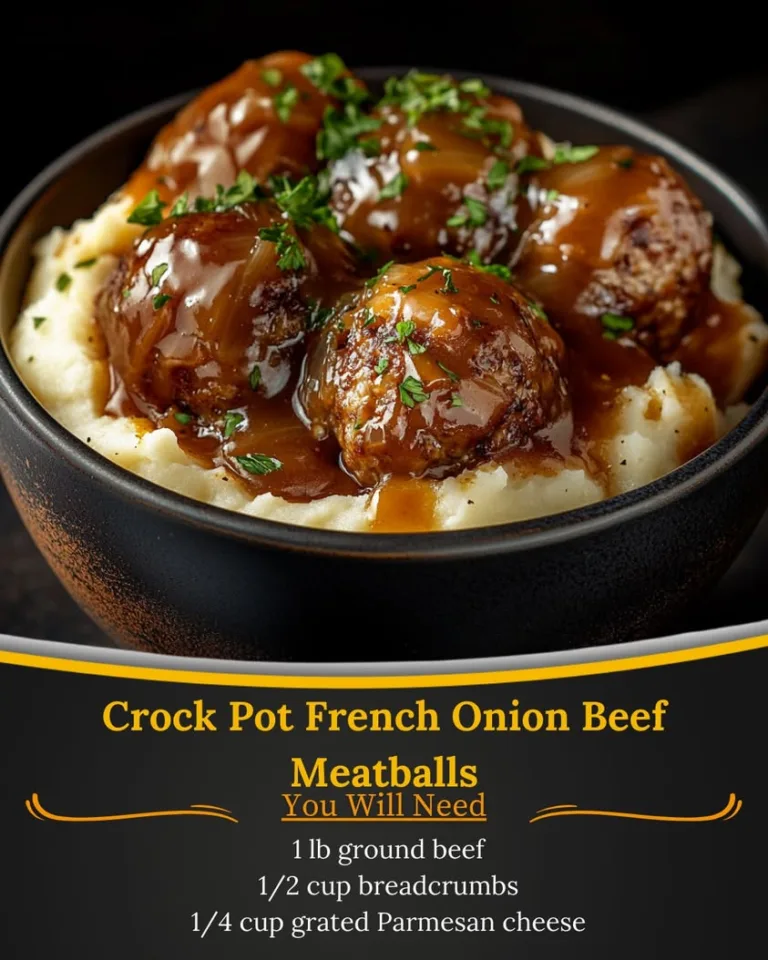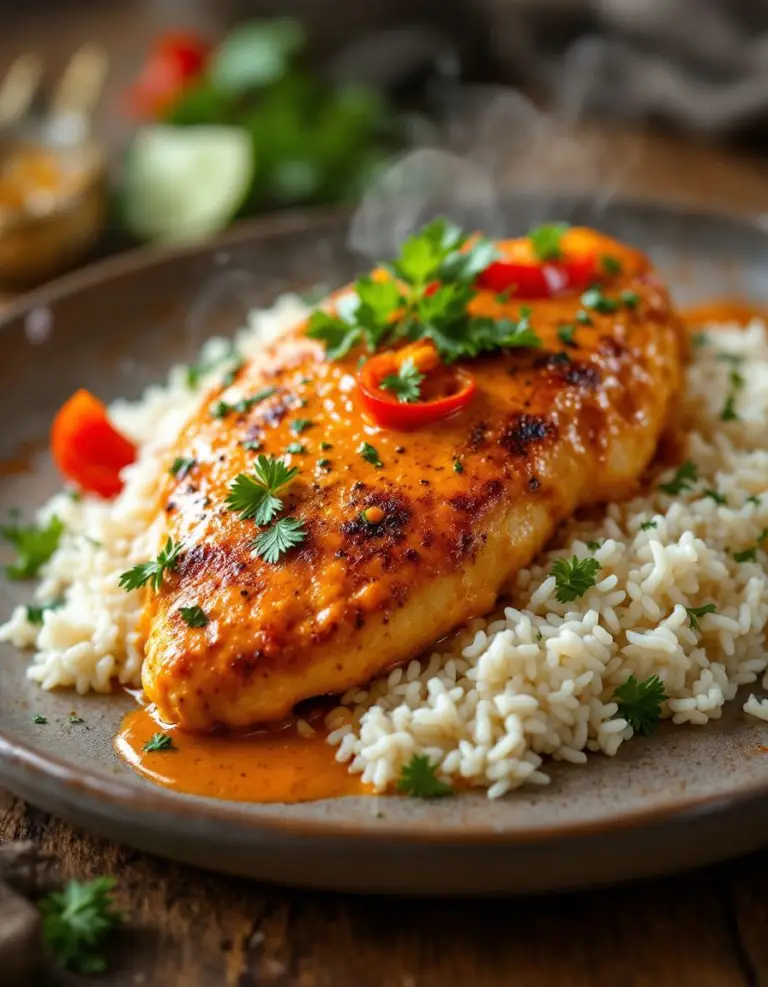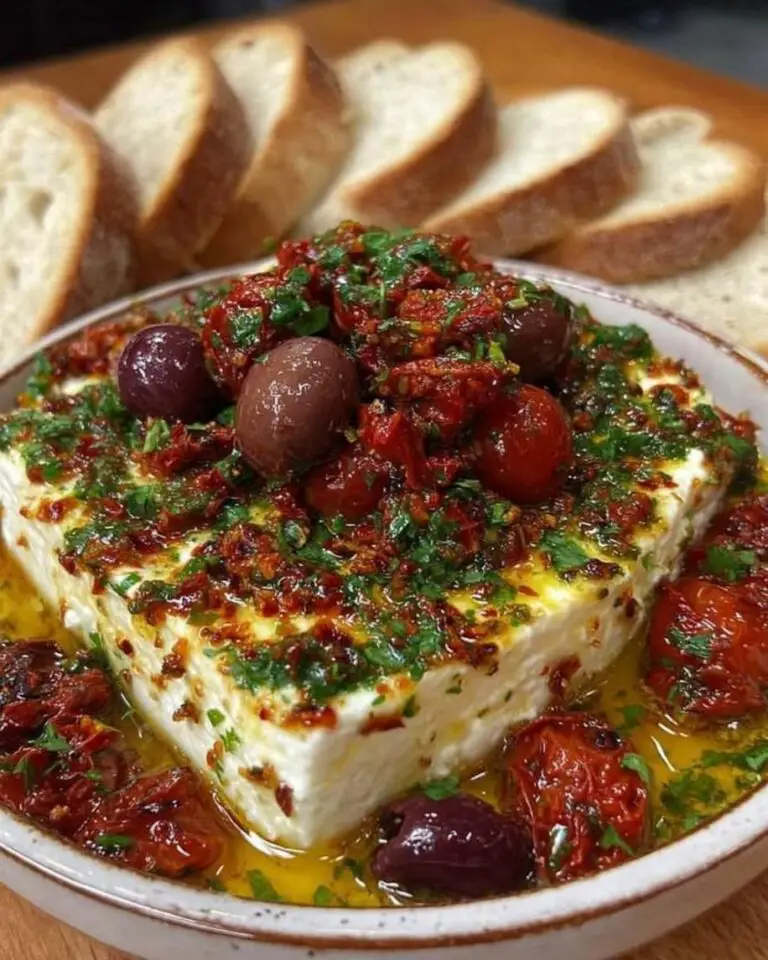Best Turkey Stuffing Balls – Perfect for Holidays
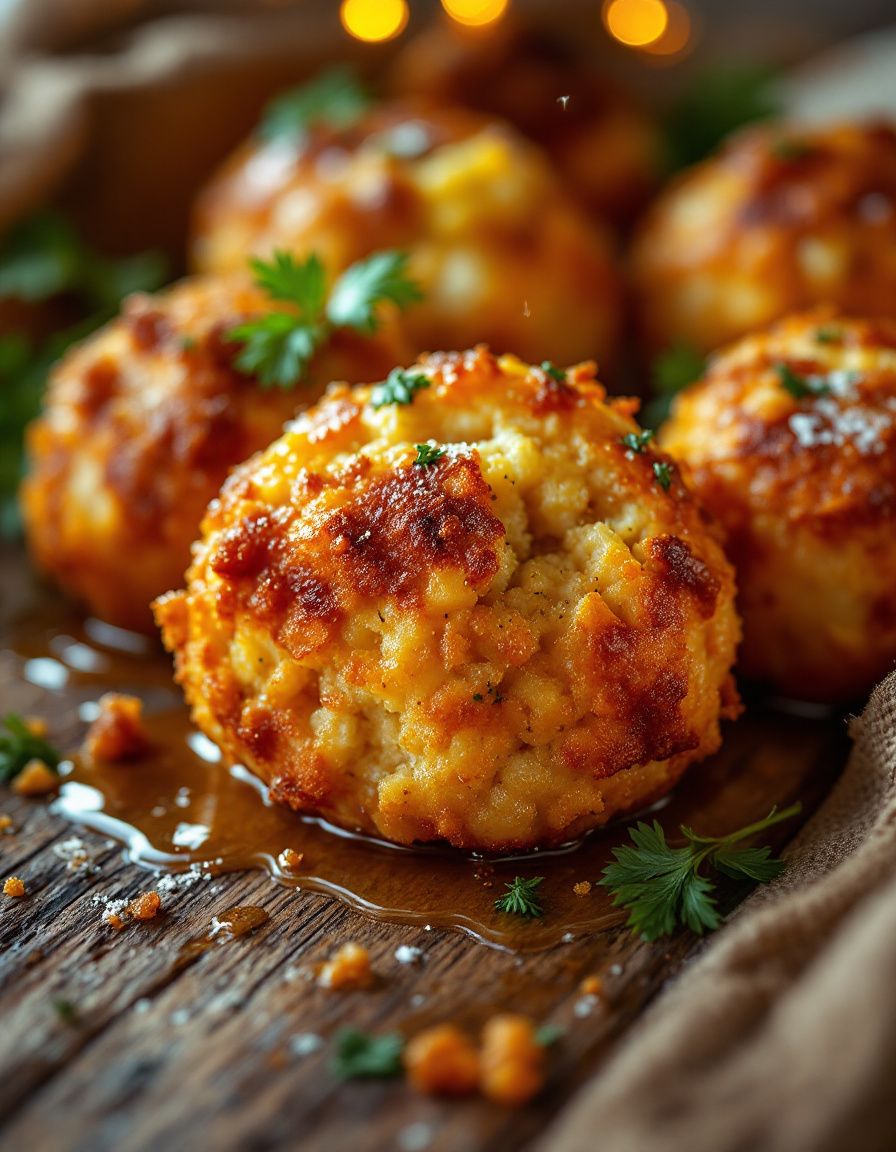
Turkey Stuffing Balls – The Ultimate Holiday Side!
Turkey Stuffing Balls are the perfect side dish for your holiday table, blending traditional flavors and delightful textures. Each bite offers a savory combination of ground turkey, fresh herbs, and a medley of spices that transports you straight to a cozy family gathering. As they bake, the stuffing balls develop a golden, crispy exterior while maintaining a moist and flavorful interior. These treats are not just delicious; they bring the warmth of beloved holiday memories to every occasion.
Imagine serving these Turkey Stuffing Balls at your next holiday feast, where the tantalizing aroma of herbs fills your kitchen. Picture your guests gathering around the table, eager to devour these comforting bites that hark back to generations of cherished recipes. It’s not just food; it’s an experience that warms the heart and satisfies the palate.
Quick Recipe Highlights
- Flavor Profile: The combination of turkey, sage, and thyme creates a aromatic depth that is both savory and inviting. Each ball bursts with flavor, enhanced by the perfect balance of herbs and spices.
- Texture: The outside offers a satisfying crunch, giving way to a tender and juicy interior that melts in your mouth.
- Aroma: Expect a delightful blend of roasted turkey and fragrant herbs wafting through the air, enticing everyone to the dining table.
- Visual Appeal: Golden brown and perfectly round, these stuffing balls are not only tasty but also beautiful on any holiday platter.
- Skill Level Needed: This recipe is accessible for cooks of all skill levels, requiring only basic cooking techniques.
- Special Equipment: You’ll need a mixing bowl, baking sheet, and an oven, making it accessible to anyone.
Recipe Overview
- Difficulty Level: This recipe is categorized as easy, with straightforward steps that make it perfect for novice cooks or those short on time.
- Category: These Turkey Stuffing Balls fit perfectly as a side dish, bringing a festive touch to your holiday table.
- Cuisine: Rooted in American culinary traditions, this dish is influenced by classic Thanksgiving flavors and seasonal ingredients.
- Cost: These ingredients are typically low-cost, making this dish both budget-friendly and delicious.
- Season: Perfect for the fall and winter months, this recipe shines during the holiday season.
- Occasion: Ideal for Thanksgiving, Christmas, or any family gathering where comfort food is celebrated.
Why You’ll Love This Recipe
The taste and texture appeal of Turkey Stuffing Balls is undeniable. Each bite delivers a perfect balance of savoriness from the turkey and a crunch from the golden exterior that’s hard to resist. The herbs infuse every ball with flavor, making them a standout side dish that complements any holiday meal.
Convenience and preparation benefits are abundant with this recipe. Turkey Stuffing Balls can be prepped in advance, allowing busy cooks to enjoy more time with family and friends. They freeze exceptionally well, making advance holiday planning simple and fool-proof.
In addition to their delicious taste, Turkey Stuffing Balls offer nutritional advantages. Made with ground turkey, they provide a lean protein source, while the herbs and spices add essential nutrients without unnecessary calories.
Social and entertaining value is another reason to love this recipe. These little bites are perfect for sharing and make for a great addition to any potluck or party. Guests will enjoy chatting and connecting over these flavorful delights.
Cost-effectiveness and accessibility make the Turkey Stuffing Balls an easy choice for any cook. With budget-friendly ingredients and simple preparation, you won’t break the bank while serving a delectable dish that everyone will love.
Historical Background and Cultural Significance
The origins of turkey stuffing can be traced back to early American settlers, who adapted their cooking techniques from various European traditions. Stuffing recipes evolved as ingredients became more accessible, particularly around the harvest season, highlighting the importance of turkey in American celebrations.
Culturally, turkey stuffing represents the spirit of Thanksgiving and the importance of family gatherings. Over the years, these stuffing balls have transformed from simple ingredients into beloved side dishes that represent home-cooked hospitality and warmth.
The evolution of this recipe emphasizes changes in ingredient availability and cooking methods. Originally made with simple bread and spices, adaptations like turkey stuffing balls incorporate modern twists, such as fresh herbs and various other flavors to elevate the dish.
Regional variations can also be found, with different states adding their unique touch by including various spices, nuts, or even regional bread types, reflecting the diverse American culinary landscape and the particular tastes of local communities.
Ingredient Deep Dive
Ground turkey is a staple and versatile ingredient in many households. It has gained popularity due to its lean protein content and flexibility in various recipes. Choosing fresh over frozen can have a significant impact on taste. Remember to look for turkey that is at least 93% lean for optimal flavor.
Fresh herbs like parsley, sage, and thyme are essential for adding brightness to your stuffing balls. These herbs not only enhance flavor but come loaded with vitamins and antioxidants. When selecting herbs, ensure they’re vibrant and fragrant; store them in a cool place, and chop just before use for maximum flavor.
Bread crumbs form the base of the stuffing ball, providing structure and texture. The type of bread can change the flavor profile significantly. Opt for whole grain or sourdough for added depth. Store bread crumbs in an airtight container to maintain freshness, or make your own by toasting stale bread.
Eggs serve as a binding agent, ensuring your stuffing balls hold their shape during cooking. The nutritional aspects of eggs include protein and healthy fats. Purchase organic or free-range eggs for optimal flavor and ethical considerations.
Onion and garlic add a robust depth of flavor. Use fresh whenever possible for the best taste, and sauté before mixing for added sweetness and aroma that enhances the overall dish.
Common Mistakes to Avoid
- Using stale bread: Stale bread can result in a dry stuffing ball. Always use fresh bread or properly dried bread crumbs.
- Overmixing the ingredients: While mixing, be gentle to avoid dense stuffing balls. Fold the ingredients until just combined.
- Skipping the seasoning: Not adequately seasoning the mixture can dull the flavors. Season generously with salt and pepper.
- Cooking at the wrong temperature: Cooking at too high a temperature can burn the outsides while leaving the insides undercooked. Aim for 350°F.
- Not letting the mixture rest: Allowing the mixture to rest for a few minutes enhances flavor melding, making stronger stuffing balls.
- Using cold ingredients: Cold meat and eggs can lead to uneven cooking. Bring ingredients to room temperature before mixing.
- Not measuring accurately: Inconsistencies in ingredient amounts can lead to unstable outcomes. Use measuring cups and spoons for accuracy.
- Skipping the pre-baking mix: Not pre-baking the mixture for a few minutes can impact the overall texture. It helps develop flavors.
- Ignoring visual cues: Relying solely on time can lead to over or undercooked stuffing balls. Check for a golden color and firm texture.
- Forgetting about leftovers: Turkey stuffing balls can be easily reheated and make for ideal leftovers. Store them properly!
Essential Techniques
Gently folding the mixture is vital to achieving a light and fluffy texture for your stuffing balls. Instead of stirring vigorously, which can make the mixture dense, use a spatula or wooden spoon to combine. Visually, the mixture should appear cohesive yet slightly rustic.
Baking at the correct temperature is key for achieving the perfect balance between a crisp exterior and tender interior. Understanding your oven’s quirks can help you gauge when to adjust the temperature. Look for visual cues like a rich golden-brown color to know when they’re done.
Pre-cooking the onions and garlic before mixing them into the stuffing adds depth and sweetness, reducing the risk of harsh flavors. Sautéing these alliums until translucent enhances their natural sweetness and prevents any raw taste.
Pro Tips for Perfect Turkey Stuffing Balls
– Use day-old bread or homemade bread crumbs for better texture. Toast lightly to bring out flavor before mixing.
– Experiment with additional spices like nutmeg or orange zest to give a unique twist to your stuffing balls.
– Consider adding nuts, such as pistachios or walnuts, for texture and flavor contrast.
– Make a batch and freeze them; they’ll be perfect for unexpected guests or cozy evenings.
– Adjust the size of the stuffing ball according to your preference; smaller ones will cook faster while larger may require more time.
– For a gourmet touch, incorporate cheese such as mozzarella or feta into the mixture for added creaminess.
– Don’t forget to baste with broth while baking for extra moisture and enhanced flavor.
– Mix in roasted vegetables for added nutrition and a vibrant color palette.
Variations and Adaptations
Turkey Stuffing Balls can be adapted to local tastes with various regional variations. For a Southern flair, consider using cornbread as the base. Adding spicy sausage can give it a kick that some might enjoy. Integrate cranberries for a touch of sweetness that can be fantastic during festive dinners.
Seasonal adaptations can also elevate this dish. In the fall, consider incorporating pumpkin puree to add both flavor and moisture to the stuffing balls. During spring, fresh asparagus can be mixed in for a burst of color and flavor.
For dietary modifications, anyone looking for gluten-free options can substitute regular breadcrumbs with gluten-free breadcrumbs or nuts. Vegan adaptations can simply exclude the turkey and egg, using mashed beans or mushrooms as a base with breadcrumbs.
Flavor variations can be created by changing up the herbs and spices. Adding bold flavors like southwestern spices can give these stuffing balls a new identity. Alternatively, Mediterranean elements such as olives and feta add a unique twist.
Textural modifications could incorporate grated vegetables, such as zucchini or carrots, providing more moisture and nutrition. Lastly, when it comes to presentation, consider forming the stuffing into fun shapes using cookie cutters for children’s parties or special occasions.
Serving and Presentation Guide
When it comes to plating Turkey Stuffing Balls, consider a vibrant dish that highlights their golden-brown color. A rustic wooden platter or elegant serving dish can elevate the overall appearance.
Garnishing ideas like fresh herbs or colored microgreens add a beautiful touch without overwhelming the dish’s flavors. Consider serving them alongside contrasting elements, such as cranberry sauce or a tangy yogurt dip, for extra flavor excitement.
Traditional accompaniments like gravy or rich broth can be served on the side for guests who want to enhance the flavor. For a modern approach, these stuffing balls can be served in lettuce wraps for a twist on presentation.
Temperature considerations are also essential, serving them warm straight from the oven for the best experience. If they cool down, a light reheating in the oven will restore their delightful texture.
Portion control can be managed by using a cookie scoop to ensure uniform sizes. If served as an appetizer, offer smaller balls and place them on toothpicks for easy snacking.
Wine and Beverage Pairing
Pairing an elegant white wine like Chardonnay or a light-bodied red like Pinot Noir can elevate the dining experience. These wines have characteristics that complement the savory notes in the turkey and herbs, balancing the dish beautifully.
For a non-alcoholic alternative, consider serving a cranberry or pomegranate juice spritzer. The fruity sweetness pairs perfectly with the stuffing balls, enhancing their flavors without overpowering them.
If coffee or tea is more your style, a robust black coffee can work well, offering a comforting contrast to the savory stuffing balls. Herbal teas can provide a calming finish to the meal, particularly chamomile or mint.
Keep in mind the serving temperature of these beverages; ideally, your wine should be served chilled while herbal teas can be served hot for the best flavor profiles.
Storage and Shelf Life
Proper storage methods for Turkey Stuffing Balls will ensure they last longer. After the dish cools, transfer them to an airtight container and store in the refrigerator for up to three days.
Temperature requirements are crucial as stuffing balls should be kept below 40°F in the fridge to avoid spoilage. If you want to keep them longer, consider freezing. They can be stored in the freezer for up to three months.
Container recommendations include vacuum-sealed bags for freezing, as they prevent freezer burn. Make sure to label the container or bag with the date for easy reference.
Signs of spoilage to watch out for include an off smell or visible mold. If they are showing signs of freezer burn, they are still safe to eat but may not have the best texture.
Reheating instructions should involve placing the stuffing balls in a preheated oven at 350°F until heated through, typically around 10-15 minutes. This will help restore their crispy exterior.
Freezing guidelines include flash-freezing them first on a baking sheet before transferring to a container, preventing them from sticking together.
Make Ahead Strategies
Prep timelines allow you to prepare Turkey Stuffing Balls in advance. Mix the ingredients the day before and store them in the fridge until you’re ready to bake. This makes your holiday cooking more efficient.
Storage between steps can also help. If you prepare the mixture but want to bake them later, refrigerate and form them just before cooking to maintain freshness.
Quality impact assessments reveal that preparing stuffing balls a day ahead allows the flavors to meld beautifully, providing a robust flavor profile.
Assembly tips include forming the balls and laying them on a baking sheet lined with parchment paper. You can freeze them at this stage; just don’t forget to label them.
Reheating guidelines emphasize baking them from frozen. Just adjust the cooking time to ensure they are thoroughly heated while maintaining their texture.
For fresh element additions, consider mixing in cooked roasted vegetables or fresh herbs a few hours before baking to maintain vibrancy.
Scaling Instructions
Scaling the recipe can be done effortlessly, whether you want to halve or double it. Halving the recipe simply requires dividing each ingredient by two, whereas tripling will multiply by three.
Choose appropriate equipment adjustments according to your batch size; larger mixtures may call for mixing in a larger bowl to ensure even distribution of flavors.
Timing modifications will be necessary if you decide to make a larger batch. Keep an eye on the cooking time, as more stuffing balls on a pan may require additional time to cook thoroughly.
Storage considerations become essential if you’re making a larger batch. Prepare extra space in your refrigerator or freezer to accommodate the increased quantity.
Bringing extra guests into the mix can mean adjusting other side dishes as well, allowing each guest to enjoy these delightful stuffing balls without overcrowding the table.
Nutritional Deep Dive
The macro breakdown is intriguing for Turkey Stuffing Balls. A typical serving provides lean protein from the turkey, essential fats from eggs, and carbohydrates from the breadcrumbs.
Micronutrient analysis indicates key vitamins and minerals obtained from the fresh herbs, particularly vitamin K from parsley and folate from garlic. These ingredients contribute significantly to promoting overall health.
Health benefits linked with this recipe include a hearty dose of protein without excessive fat, making them a filling yet healthy option to fortify any holiday meal.
Dietary considerations can be made for various eaters, ensuring there’s a level of satisfaction for each guest, from gluten-free options to vegetarian alternatives.
Portion analysis is also helpful; a serving size of 2-3 stuffing balls is reasonable and accommodating for hearty eaters while allowing light eaters to enjoy them without overindulgence.
Weight management tips involve pairing stuffing balls with a light salad or vegetable dish on the side to create a balanced meal that satisfies without overwhelming dietary goals.
Dietary Adaptations
For gluten-free options, consider substituting regular breadcrumbs with gluten-free breadcrumbs or cornmeal as a binding agent to deliver the same crisp and savory satisfaction.
Dairy-free adaptations are simple as subsisting eggs and any dairy with alternatives ensures those with allergies can still enjoy the dish. Flax eggs can act as a great binding and moisture agent.
Vegetarian adaptations can use plant-based proteins like quinoa or lentils instead of turkey. Flavors stay intact while accommodating vegetarian diets.
Low-carb dieters can replace breadcrumbs with almond flour or ground chia seeds to achieve a savory texture with fewer carbohydrates while maintaining flavor.
Keto adaptations should incorporate high-fat ingredients such as cream cheese, which can also help bind the stuffing balls while adding richness to the flavor profile.
Paleo dieters can enjoy this dish by using non-processed ingredients and trading breadcrumbs for dried mushrooms or veggies, keeping their diet clean and healthy.
Low-FODMAP considerations include omitting garlic and onion, instead using garlic-infused oils for flavor without triggering digestive issues.
Troubleshooting Guide
For texture issues, if the balls are too dry, consider rehydrating the bread with broth or adding more binding agents like eggs. They should hold together without crumbling.
Flavor balance can be achieved by adjusting seasoning. If they taste bland, increase the salt, pepper, or herbs proportionately until a satisfying flavor emerges.
Temperature problems arise when they aren’t cooked evenly. Ensuring your oven is calibrated and using an oven thermometer can help avoid this common issue.
Equipment challenges may stem from the mixing bowl size or the baking sheet. Using the right-sized bowl and avoiding overcrowding on the baking sheet is crucial for consistent cooking.
Ingredient substitutions require adaptation. If you lack one ingredient, experiment with similar flavors; for instance, swap out turkey for chicken for a comparable result.
Timing concerns can be mitigated by checking doneness with a food thermometer, ensuring internal temperatures reach a safe level, usually around 165°F for ground meat.
Recipe Success Stories
Community feedback highlights positive experiences firsthand; many home cooks rave about how easy and satisfying these Turkey Stuffing Balls are to prepare and enjoyed by all family members, including picky eaters.
Variation successes play a role, as readers have adapted the recipe to align with dietary preferences, creating gluten-free or vegan stuffing balls without compromising flavor or texture.
Adaptation stories have emerged, where readers share their twists on the traditional stuffing balls, showcasing nuts, fruits, or different spice blends to personalize their recipes.
Photography tips have also circulated within the community, with home cooks documenting the joy of their food, encouraging others to share their experiences openly and visually celebrate their culinary achievements.
Engagement through reviews has spurred connection; many grateful home cooks are thrilled to share how their delicious stuffing balls turned heads at their holiday gatherings.
Frequently Asked Questions
Can I make Turkey Stuffing Balls in advance?
Yes! You can prepare the mixture ahead of time and store it in the refrigerator. Form them into balls right before baking for optimum freshness.
How do I know when Stuffing Balls are done?
Stuffing Balls are done when they are golden brown and reach an internal temperature of 165°F. Use a meat thermometer for accuracy.
Can these be frozen for later use?
Absolutely! Freeze the formed stuffing balls on a baking sheet, then transfer them to an airtight container for up to three months.
What should I serve with Turkey Stuffing Balls?
These pairs wonderfully with a variety of sides like mashed potatoes, gravy, and cranberry sauce, perfect for any holiday meal.
Can I use chicken instead of turkey?
Definitely! Ground chicken will work well in this recipe and provide a slightly different flavor if desired.
What’s the best way to reheat them?
Reheat in a preheated oven at 350°F until they are heated through, typically about 10-15 minutes. This will help retain their crispiness.
What type of bread should I use for the stuffing?
Use sturdy bread like sourdough or whole wheat for the best texture. Fresh or dried bread crumbs work equally well.
Is this recipe gluten-free?
The traditional recipe is not gluten-free, but you can easily substitute gluten-free bread and breadcrumbs for a safe alternative.
How can I add more flavor?
Incorporate additional spices, herbs, or even sautéed vegetables to enhance the overall taste of your stuffing balls.
Can I use dried herbs instead of fresh?
Yes, but dried herbs are more potent. Use about one-third of the amount called for fresh herbs for the best flavor.
Additional Resources
For those looking to expand their holiday menu, consider checking out related recipes like classic mashed potatoes or green bean casserole. These sides complement Turkey Stuffing Balls perfectly and create a well-rounded meal.
Technique guides for making your stuffing balls can help refine your skills in the kitchen. Understanding flavor combinations and cooking methods elevates your holiday cooking experience.
Ingredient information offers invaluable insight into sourcing quality ingredients. Knowing where to find fresh turkey, herbs, and bread can make a significant difference in flavor.
Equipment recommendations are essential, especially if you’re investing in kitchen tools. Quality mixing bowls, baking sheets, and utensils are invaluable for various recipes year-round.
Seasonal variations can inspire fresh ideas; consider incorporating seasonal vegetables or utilizing leftovers to create exciting new dishes for your holiday feast.
Join the Conversation
Engaging with social media sharing can ignite curiosity and excitement about your culinary creations. Share your Turkey Stuffing Balls on platforms like Instagram to inspire others.
Photography tips enhance your cooking endeavors. Capturing the beauty of your dish can draw attention and create lasting impressions, encouraging interaction and engagement.
Recipe reviews bring vulnerable experiences to life and allow others to learn from your successes, instilling confidence in those trying to prepare their own stuffing balls.
Community engagement furthers the joy of culinary endeavors, creating a space where everyone can exchange ideas, tips, and variations to enjoy together.
Explore recipe variations suggested by fellow cooks; this sharing can spark new ideas and potentially lead to your unique creation!
The Recipe
Turkey Stuffing Balls
Serves: 6-8 servings
Prep Time: 20 mins
Cook Time: 30 mins
Total Time: 50 mins
Kitchen Equipment Needed
- Baking sheet
- Mixing bowl
- Measuring cups and spoons
- Wooden spoon or spatula
- Food thermometer
Ingredients
- 1 pound ground turkey
- 1 cup breadcrumbs
- 2 eggs
- 1/2 cup finely chopped onion
- 1/4 cup chopped fresh parsley
- 1 teaspoon salt
- 1/2 teaspoon black pepper
- 1 teaspoon dried thyme
- 1 teaspoon dried sage
- 1/4 cup chicken broth (optional for moisture)
Directions
- Preheat your oven to 350°F (175°C) and prepare a baking sheet lined with parchment paper.
- In a large mixing bowl, combine the ground turkey, breadcrumbs, eggs, onions, parsley, salt, pepper, thyme, and sage.
- Mix until just combined, being careful not to overwork the mixture.
- If the mixture seems dry, add the chicken broth as needed for moisture.
- Scoop out portions and form them into 1-2 inch balls. Place them onto the prepared baking sheet.
- Bake in the preheated oven for 25-30 minutes, or until golden brown and cooked through (internal temperature of 165°F).
Recipe Notes
- Feel free to add your favorite spices or vegetables to the mixture to customize the flavor.
- These can be frozen before baking for up to three months; just bake them a little longer from frozen.
- Serve with a side of gravy or cranberry sauce for added flavor.

